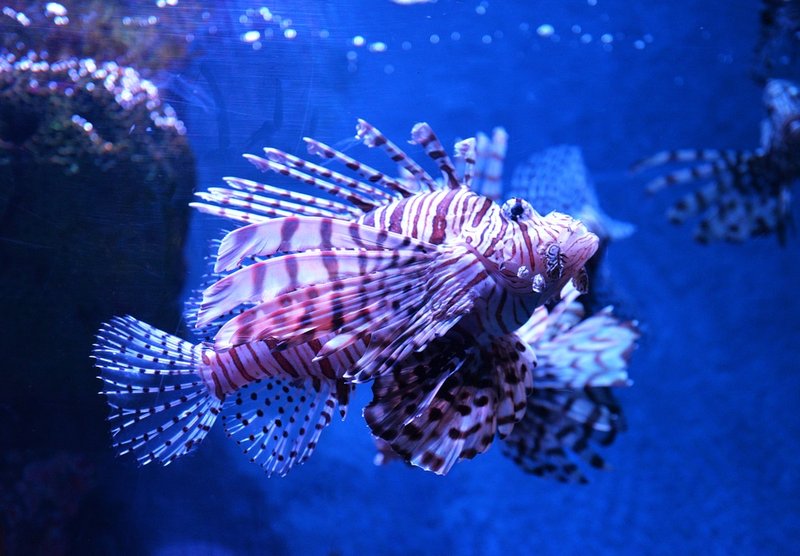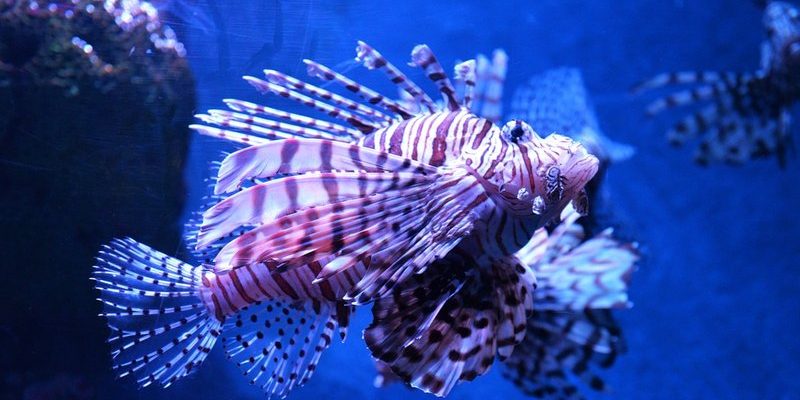
Understanding whether lionfish can coexist with other species is crucial for creating a peaceful and harmonious tank environment. Just like you wouldn’t invite a bouncer to a book club, you might want to think carefully about the types of fish you introduce alongside a lionfish. Let’s dive into the nitty-gritty of tank mate compatibility, so your underwater ecosystem thrives—like a well-tuned band playing in harmony.
Understanding the Lionfish: A Quick Overview
Before we get into who can play nice with a lionfish, it’s helpful to understand this unique fish. Originating from the warm waters of the Indo-Pacific, lionfish have become well-known in aquariums for their striking appearance. These fish sport long, flowing fins and bold stripes that make them visually captivating. But don’t let their beauty fool you—lionfish are equipped with venomous spines that can give a nasty sting.
Lionfish are also known for being relatively territorial. They tend to stake out their space in the tank and can be aggressive, especially when they feel threatened. This territorial nature can lead to clashes with other fish, so it’s essential to choose tank mates wisely. Here’s the thing: not all fish are equal in temperament, and the wrong combination can lead to stress or even disaster in your aquarium.
Ideal Tank Conditions for Lionfish
Setting the right stage for your lionfish is key to ensuring their happiness and compatibility with other fish. Lionfish thrive in specific conditions, which include:
- Water Temperature: Lionfish prefer warmer waters, ideally between 75°F and 82°F.
- Salinity: A salinity level of 1.020-1.025 SG is best for these creatures.
- pH Level: Keep the pH between 8.1 and 8.4 for optimal health.
- Tank Size: A minimum of 50 gallons is recommended, as lionfish need space to swim and establish territory.
- Filtration: Good water quality is critical. A quality filtration system will help keep harmful toxins at bay.
Improving these conditions doesn’t just benefit your lionfish; it creates an environment that other fish may thrive in, too. Think of it like setting the perfect scene for a movie—good lighting, engaging characters, and a strong storyline make all the difference.
Choosing Compatible Tank Mates
Now that we’ve set the scene, let’s talk about who can share this aquatic stage with the lionfish. When considering tank mates, you want species that can coexist peacefully. Here are some categories of fish that often do well alongside lionfish:
- Hardy Species: Look for fish that are resilient and can hold their ground, like larger gobies or robust damselfish.
- Fast Swimmers: Fish that can outpace the lionfish, such as the clownfish or some wrasses, may have a better chance of avoiding aggression.
- Bottom Dwellers: Species like certain types of shrimp or catfish tend to stay out of the lionfish’s territory, making them good companions.
However, you’ll want to avoid peaceful, slow-moving fish that may get bullied or eaten. It’s like having a gentle giant in the room—great intentions, but you still need to be careful who you invite over.
Fish to Avoid with Lionfish
Not every fish is cut out for life with a lionfish. Understanding who to steer clear of is just as important as knowing who makes a good tank mate. Here are some types of fish that typically don’t mix well with lionfish:
- Small, Delicate Fish: Fish like guppies and neon tetras can be prime targets for the lionfish’s predatory instincts.
- Peaceful Species: Fish such as the tangs or angelfish may be bullied or stressed out by the aggressive nature of a lionfish.
- Similar Size Fish: Fish that are about the same size as lionfish may be mistaken for competition and lead to aggressive encounters.
Imagine a social gathering where the lionfish is the strong personality in the room; you wouldn’t want timid guests who might get overshadowed or intimidated.
Monitoring Behavior in the Tank
Once you introduce your lionfish to its new companions, keep a close eye on their interactions. Behavior monitoring is crucial for spotting potential issues before they escalate. Here’s what to watch for:
- Aggression: If you notice the lionfish chasing or nipping at other fish, it may be time to rethink your tank setup.
- Hiding: If your other fish are spending too much time hiding, it could be a sign of stress.
- Feeding: Make sure all fish are eating properly. A lack of interest in food can signal stress or incompatibility.
Regular observation can help you identify problems early on, allowing you to take action before things get out of hand. Think of it as being the referee in a game—keeping things in check to ensure everyone plays nicely.
Creating a Comfortable Environment
Creating a cozy setup can go a long way in promoting harmony among your aquarium inhabitants. Lionfish appreciate places to hide and explore, so think about how you can make the tank more inviting. Here are some tips:
- Rocks and Caves: Adding rock formations and caves can give fish plenty of hiding spots.
- Plants: Live or artificial plants can provide a natural feel and potential cover for smaller fish.
- Open Swimming Space: Ensure there’s ample space for swimming to reduce territorial disputes.
Think of your tank as a venue for a concert. A well-designed stage and space for the audience can enhance the overall experience, making it enjoyable for all.
In summary, the lionfish can live with other fish, but careful consideration must go into selecting tank mates. By understanding their behavior, tank requirements, and compatibility, you can create a vibrant community that thrives. Just remember, it’s about the right mix—like a great playlist where every song complements the others.
So, take your time when choosing your fish, monitor their interactions, and be prepared to make adjustments as needed. With a little patience and attention, you can create an aquarium that’s not just beautiful but also harmonious—where each fish plays its part beautifully.

